
The Enchanting Harmony of Kambanite Park: A Musical Retreat
Discover the serene Kambanite Park in Sofia, where nature meets the enchanting sounds of large bells, perfect for relaxation and cultural immersion.
Kambanite Park, known as The Bells, is a captivating destination in Sofia where music and nature converge. This unique park features an impressive collection of large bells that create a serene atmosphere, making it perfect for relaxation and exploration.
A brief summary to Kambanite (The Bells) Park
- Sofia, Mladost, 1756, BG
- Visit website
Local tips
- Visit during the early morning or late afternoon for a quieter experience and the best lighting for photography.
- Bring a picnic to enjoy in the peaceful surroundings—there are plenty of scenic spots to choose from.
- Don't miss the opportunity to listen to the bells chime; check local schedules for any special music events.
- Wear comfortable shoes to explore the park's pathways and surrounding areas fully.
- Take your time to appreciate the unique architectural details of the bells and the surrounding sculptures.
Getting There
-
Car
If you are driving from central Sofia, take the Boulevard Tsarigradsko Shose (E80) heading towards the airport. Continue on this road for approximately 10 kilometers. After passing the Sofia Airport, take the exit toward Mladost and follow signs for Mladost 1. Once in Mladost, navigate to the address Mladost, 1756 Sofia. The park is well-signposted and features a large bell structure that is visible from the surrounding area. Parking is available near the entrance of the park, but be mindful of local parking regulations.
-
Public Transportation
To reach Kambanite (The Bells) Park using public transport, start by finding the nearest metro station. If you are in central Sofia, take the Sofia Metro Line 1 (the red line) towards Mladost 1. Disembark at the Mladost 1 station. From there, transfer to bus number 113 or 88. Board the bus and ride for about 5 minutes until you reach the stop named 'Kambanite.' The park entrance is a short walk from the bus stop. Be sure to have a public transport card or ticket, which costs approximately 1.60 BGN.
Discover more about Kambanite (The Bells) Park
Iconic landmarks you can’t miss
The Balkan Petronas Towers (two bridged socialist block towers)
5.0 km
Explore the stunning Balkan Petronas Towers in Sofia, a unique blend of socialist architecture and modern allure, perfect for photography and leisurely strolls.

Television Tower
7.2 km
Discover Sofia's rich history and breathtaking views at the iconic Television Tower, a blend of modernity and tradition in Bulgaria's capital.

Observation deck
7.3 km
Explore the Observation Deck in Bulgaria for breathtaking views and a serene escape into nature, perfect for photography and relaxation.

Urvich fortress
7.7 km
Explore the Urvich Fortress in Sofia, Bulgaria – a remarkable blend of history, adventure, and breathtaking mountain views.

Under the Linden Trees
7.9 km
Experience authentic Bulgarian cuisine in Sofia at Under the Linden Trees, where tradition meets a warm and inviting atmosphere.

Guesthouse Moten
8.1 km
Discover the charm of Guesthouse Moten, where delicious Bulgarian cuisine meets the breathtaking beauty of Vitosha Mountain.

Vitoshko Lale Ski Track
8.2 km
Experience the thrill of skiing at Vitoshko Lale Ski Track, a stunning resort in the Vitosha Mountains, perfect for winter sports enthusiasts of all levels.

Roman wall (old wall)
8.3 km
Explore the Roman Wall in Sofia, a historical landmark that reveals the ancient roots of Bulgaria's capital, blending history with modern charm.

Prince's Garden
8.8 km
Explore the lush landscapes and historical charm of Prince's Garden, a serene park in the heart of Sofia, Bulgaria's vibrant capital.

Galunka Panorama Walk - Zheleznitsa to Bistritsa
8.8 km
Experience the stunning views and natural beauty of the Galunka Panorama Walk, a premier hiking destination near Sofia, Bulgaria.

Traditional Bulgarian Restaurant Chevermeto Sofia
8.8 km
Experience the heart of Bulgarian cuisine at Chevermeto Sofia, where traditional flavors meet vibrant local culture in a warm and inviting setting.

National Palace of Culture (NPC)
8.9 km
Experience the vibrant cultural scene at Sofia's National Palace of Culture, a must-visit destination for art and history enthusiasts.

National Palace of Culture Park
8.9 km
Discover the vibrant National Palace of Culture Park in Sofia, a serene green oasis rich in culture, art, and scenic beauty.

Sofia Sign
9.0 km
Discover the iconic Sofia Sign in National Palace of Culture Square, a vibrant symbol of Bulgaria's culture, art, and history.

Гробница на княз Александър I Батенберг
9.0 km
Explore the Tomb of Prince Alexander I Battenberg in Sofia, a serene historical site reflecting Bulgaria's rich cultural heritage and royal legacy.
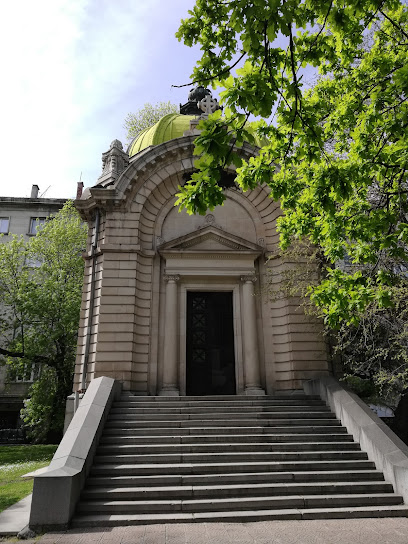
Unmissable attractions to see
Banner of Peace monument
0.0 km
Discover the Banner of Peace Monument in Sofia, a stunning tribute to peace and unity set in a tranquil park, perfect for reflection and cultural exploration.

Pancharevo Lake Dam Wall
2.5 km
Experience the natural beauty and tranquility of Pancharevo Lake Dam Wall, a serene retreat near Sofia, Bulgaria, perfect for outdoor adventures and relaxation.

Swimming Pool Korali Pancharevo
2.6 km
Dive into relaxation at Swimming Pool Korali Pancharevo, Sofia's serene oasis for families and sun-seekers alike.

Vartopo Park
2.9 km
Discover the serene beauty of Vartopo Park, a hidden gem in Sofia offering lush greenery and tranquil spaces for relaxation and outdoor activities.

GAME CASTLE - Гейм Касъл, Real-life escape rooms
3.0 km
Experience the thrill of escape rooms at Game Castle in Sofia, where adventure, teamwork, and unforgettable fun await you.

Lake Pancharevo
3.1 km
Discover the tranquil beauty of Lake Pancharevo, an idyllic escape for nature lovers seeking adventure and relaxation near Sofia.

Каяк Зона Панчарево/Kayak Zone
3.4 km
Discover the beauty of Pancharevo with Kayak Zone, your ultimate destination for kayaking and outdoor adventures amidst stunning natural landscapes.

Snail House
3.4 km
Explore the whimsical Snail House in Sofia, Bulgaria, a unique architectural attraction near Vitosha Mountain, perfect for photography and inspiration.

Pancharevo Park
3.5 km
Experience the natural beauty and tranquility of Pancharevo Park, a serene oasis just outside Sofia, perfect for relaxation and outdoor fun.

Pancharevo Viewpoint with Cross and Bench
4.0 km
Experience tranquility and breathtaking views at Pancharevo Viewpoint, a must-visit scenic spot for nature enthusiasts and travelers in Bulgaria.

Механа Магията на Чергите | Tavern Chergite
4.2 km
Experience the warmth of Bulgarian hospitality and savor traditional dishes at Tavern Chergite in Sofia's vibrant Studentski Kompleks.

Vrana Park & Museum
5.0 km
Explore the lush greenery and historical charm of Vrana Park & Museum, a serene escape in Sofia, Bulgaria, perfect for nature lovers and history enthusiasts.

Muzeiko
5.0 km
Discover Muzeiko, Bulgaria’s premier science museum in Sofia, where fun meets learning through interactive exhibits and hands-on activities for all ages.

Долен Алеков водопад
5.3 km
Explore the stunning Dolen Alekov Waterfall in Sofia, a serene retreat perfect for nature lovers and adventure seekers alike.

Socialist Art Museum
5.6 km
Discover the captivating art and history of Bulgaria's socialist period at the Socialist Art Museum in Sofia, a unique cultural experience.
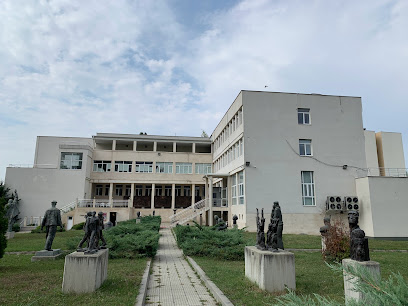
Essential places to dine
LAZY Dolcevita
2.4 km
Experience authentic Italian cuisine at LAZY Dolcevita in Sofia – where every dish tells a story of tradition and flavor.

Golden lamb
3.3 km
Experience authentic Bulgarian flavors at Golden Lamb in Sofia's charming SimeonovoVitosha district.

Restaurant Aegean Sea
3.4 km
Discover authentic Greek cuisine at Restaurant Aegean Sea in Sofia's picturesque Simeonovo district – where every dish tells a story.

Tavern hut
3.4 km
Discover authentic Bulgarian flavors at Tavern Hut in Sofia's scenic SimeonovoVitosha - where tradition meets taste.

Djorevata Kashta
3.5 km
Experience authentic Bulgarian cuisine at Djorevata Kashta in Sofia – where tradition meets taste in a cozy setting.

Romance
3.7 km
Experience Sofia's sweetest delights at Romance – where delectable desserts meet charming ambiance amidst stunning mountain views.

Restaurant "Swan"
3.9 km
Discover culinary excellence at Restaurant 'Swan' in Pancharevo - where fine dining meets breathtaking views.

The Walnut Pub
4.0 km
Experience authentic Bulgarian cuisine at The Walnut Pub in Sofia's scenic Simeonovo area, where tradition meets taste.

Garden restaurant Yoli
4.1 km
Experience authentic Bulgarian flavors in a serene garden setting at Garden Restaurant Yoli in Sofia.

Restaurant 507
4.2 km
Experience authentic Bulgarian cuisine amidst the serene beauty of Sofia at Restaurant 507, where every dish tells a story.

Neighbors
4.9 km
Experience authentic Bulgarian cuisine at Neighbors in Sofia—a family-friendly restaurant perfect for every palate.

Elenska mehana
5.1 km
Savor the flavors of Bulgaria at Elenska Mehana - where tradition meets taste in Sofia's vibrant culinary scene.
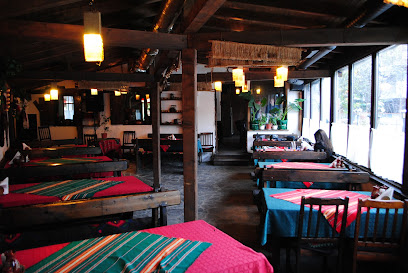
Витоха ресторант - градина / Vitoha restaurant - garden
5.8 km
Experience the best of Bulgarian cuisine in a stunning garden setting at Vitoha Restaurant in Sofia.

Пицария Ресторант “Чичовци” | Ресторант София | Пицария София
5.8 km
Savor authentic Bulgarian cuisine amidst stunning mountain views at Пицария Ресторант “Чичовци”, your perfect dining destination in Sofia.

Котилото
5.9 km
Discover authentic Serbian flavors at Котилото in Sofia - where tradition meets culinary excellence in a cozy atmosphere.

Markets, malls and hidden boutiques
Dice.bg
1.7 km
Explore the latest gadgets and tech essentials at Dice.bg, Sofia's premier electronics store, where customer satisfaction meets cutting-edge technology.

Luxury Outlet Bulgaria
2.2 km
Discover unbeatable deals on top fashion brands at Luxury Outlet Bulgaria, your premier shopping destination in Sofia.

Coincasa
2.3 km
Explore Coincasa, Sofia's premier gift shop, for unique home goods and stylish furnishings that capture the essence of Bulgarian design.

Sofia Ring Mall
2.4 km
Explore Sofia Ring Mall, Bulgaria’s largest shopping center, offering a diverse shopping experience, delightful dining, and family entertainment all in one place.

Cheese Box Edition
3.4 km
Explore the rich flavors at Cheese Box Edition, Sofia's premier gourmet grocery store and bakery, offering artisanal cheeses and freshly baked delights.

Магазин Таджин
3.4 km
Explore a gourmet paradise at Магазин Таджин in Sofia, offering exquisite spices, teas, nuts, and more for every culinary enthusiast.

Dragalivtzi
3.5 km
Discover Dragalivtzi, a serene bookstore in Sofia's Vitosha area, where literature meets breathtaking mountain views and a peaceful retreat.

Thracian bio-beauty Bulgarian products
4.3 km
Experience the essence of Bulgarian beauty with Thracian Bio-Beauty's natural skincare products, celebrating tradition and quality in every item.

The Mall
4.7 km
Discover The Mall Sofia – a shopping haven with diverse stores, dining, and entertainment for an unforgettable experience in Bulgaria's capital.

Карикатури, тениски, чаши и гравирани подаръци — ArtLab.BG
5.3 km
Discover unique caricatures, personalized gifts, and stylish souvenirs at ArtLab.BG, the ultimate gift shop in Sofia, Bulgaria.

teahouse.bg
5.6 km
Experience the serenity of Sofia's Teahouse, a sanctuary of exquisite teas and spices, perfect for a peaceful retreat amidst the city's hustle.
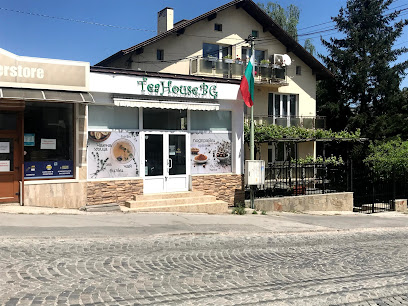
Подарък в балон
6.0 km
Explore Подарък в балон in Sofia, your premier destination for unique gifts and personalized balloon arrangements that celebrate Bulgarian culture.
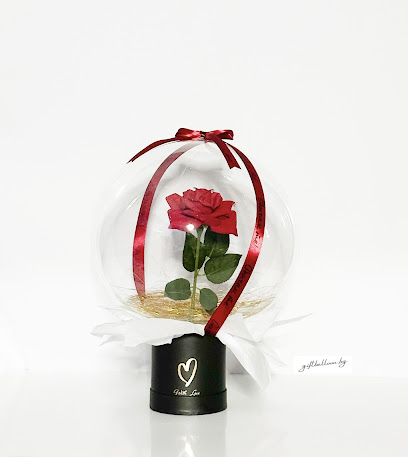
Gift Tube Paradise Center - Shop
6.8 km
Explore the vibrant Gift Tube Paradise Center in Sofia for unique local gifts, artisan crafts, and memorable souvenirs that capture the spirit of Bulgaria.

Paradise Center
6.8 km
Explore Paradise Center, Sofia's premier shopping mall offering a diverse array of shops, dining, and entertainment for an unforgettable experience.

VIP SHOP - Paradise Center
6.9 km
Explore VIP SHOP in Paradise Center for unique gifts, local art, and memorable souvenirs that capture the essence of Sofia.

Essential bars & hidden hideouts
Man Cave - Relax and Have Fun
1.1 km
Experience the best of Sofia's nightlife at Man Cave, a bar dedicated to relaxation and fun with an extensive drink menu and inviting ambiance.

Best Drinks
1.2 km
Discover the vibrant bar scene in Sofia at 'Best Drinks', where crafted cocktails and local brews await in a lively atmosphere.

Cozy Bar
2.0 km
Discover the vibrant atmosphere of Cozy Bar in Sofia, where refreshing drinks meet delightful events and a relaxing swimming basin.

Umbrella Bar
4.6 km
Experience the vibrant grill culture of Sofia at Umbrella Bar, where delicious traditional dishes meet a lively ambiance.

The Shots
4.7 km
Discover The Shots in Sofia: A vibrant bar offering cocktails, local brews, and a lively atmosphere perfect for nightlife enthusiasts.

Urban Legend
4.7 km
Experience the lively atmosphere of Urban Legend, a premier bar and hookah lounge in Sofia, perfect for nightlife enthusiasts and social gatherings.
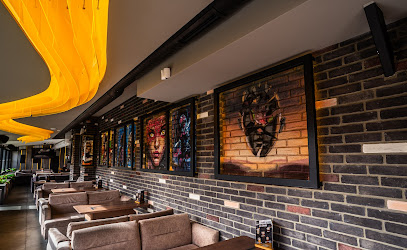
Club Conte
4.8 km
Explore Sofia's nightlife at Club Conte, where vibrant energy meets quality drinks and top DJs in the heart of the city.

B53 Cocktail Bar & Dinner
5.6 km
Discover Sofia's vibrant nightlife at B53 Cocktail Bar & Dinner, where innovative cocktails meet exquisite dining amidst stunning mountain views.

One More Park Bar
7.0 km
Experience the vibrant atmosphere of One More Park Bar in Borisova Gradina, Sofia, where delicious drinks meet beautiful park views.

The Corner
7.2 km
Experience the melodic charm of The Corner, Sofia's premier piano bar, offering exquisite cocktails and stunning city views for an unforgettable night.

Casa De Cuba
8.1 km
Discover the lively essence of Cuban culture at Casa De Cuba, a vibrant bar in Sofia with delightful cocktails and an electric atmosphere.

Caché Bar & Cafe
8.3 km
Discover the vibrant atmosphere and delicious offerings at Caché Bar & Cafe, a local favorite in Sofia's Lozenets neighborhood.

Ale House Lozenets
8.5 km
Dive into the vibrant atmosphere of Ale House Lozenets, where traditional Bulgarian flavors meet an extensive selection of local beers.

Art Club
8.6 km
Experience the vibrant nightlife of Sofia at Art Club, where live music meets delicious food and great drinks in a culturally rich atmosphere.

The Thirsty Dragon Inn
8.6 km
Experience the rich flavors of Bulgarian cuisine at The Thirsty Dragon Inn in Sofia's vibrant center, where tradition meets a cozy atmosphere.




